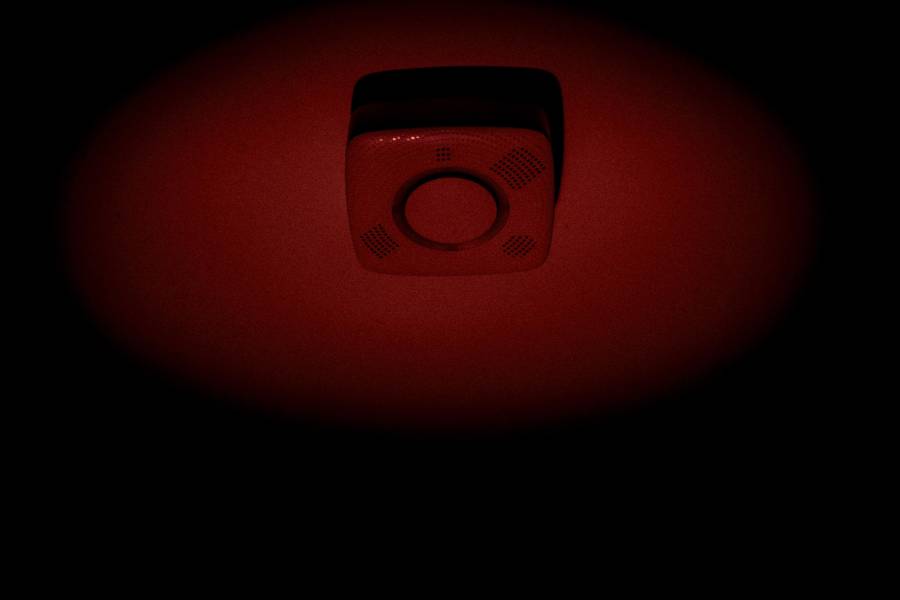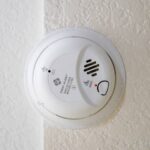Table of Contents
You might have several smoke detectors in different places, then suddenly, one of them starts beeping, even when there is no fire.
It’s annoying and dangerous since it might not help when a real threat comes.

You need to detect and handle it immediately, which can be hard sometimes. Don’t worry; we will teach you how to tell which smoke detector is beeping.
A Guide To Identifying The Beeping Smoke Detector
Let’s get right in and show you how you can tell from where the sound is coming. Our guide will include the reasons that cause beeping in smoke detectors.
The Specific Beeping Sound
The first and more important step in identifying the beeping detector is knowing the why. There are many reasons why smoke detectors go off.
This guide’s first section will examine three main beeps and their meaning. It is because you can easily find a beeping detector when you can see the obvious reasons.
Here are three main beeps and their causes.
Loud And Fast
If your smoke detector is beeping loud and fast, it’s because of one of the following three reasons:
Fire
Smoke detectors use smoke to turn on and warn you that there is a possible fire, and you should take the necessary precaution. It comes with a loud and fast beeping.
You might not see the smoke. But that does not mean you rule this possibility out immediately.
When you hear the beeping, it should be your first guess, and be sure to launch an investigation.
False Alarms
A smoke detector will work if it detects any heat, even if it’s not fire. If, for instance, someone passes nearby smoking tobacco, the smoke from it may cause it to go off.
And this is why smoke detectors should always be at recommended distances from any fireplace as recommended by NFPA.
It includes your kitchen, where most of the cooking happens.
The Smoke Detector Is Too Old
Smoke detectors have specific lifespans. Experts say one of the reasons for beeping when there is no threat is the end of its life.
It is characterized by a loud chirp every minute.
The only way to deal with such a problem is by replacing the device. But if it’s still under warranty, you can have it replaced as faulty.
Whatever the case, you will need a new one.
Consistent And Spaced Chirps
It is another possible beeping sound from a smoke detector. There are two possible reasons:
Malfunctioning
Are you hearing three consistent chirps or seeing red flashes and chirps at intervals? It could be your device is malfunctioning.
One reason for this is expiration. You can have it replaced as soon as possible.
Battery Issues
Batteries can also cause consistent and spaced chirps. You can tell this quickly by holding the test button for a few seconds.
If it produces a loud alarm sound, your device is suitable. But if it doesn’t, get replacement batteries and try it again.
Irregular And Erratic Beeping
Irregular beeps could also be a sign of underlying issues. You need to listen carefully and find out what type of beep is coming out.
Where this is the case, it could mean either of the following two things:
Faulty Battery
Check the battery to ensure they are in good condition. A low battery may cause the device to beep so.
Airflow And Temperature Issues
Temperature fluctuations and humidity could also cause your alarm to go off. Try checking the location of different detectors and see which one is in such areas.
For instance, placing the device near an open window or ceiling fan can make it too cold and start acting up.

Summary
Knowing what specific beeping means and understanding where your devices are, it much easier to know the one beeping.
It’s all about relating specific issues to the performance and status of your devices.
For example, if you have one smoke detector that you haven’t changed batteries in a long time, you can quickly identify it from the others when it beeps.
Using Alerts On Your Phone
You can try a few things smoke detector is beeping. One of the easiest methods is using alerts from your phone.
It is possible if you have modern intelligent smoke alarms.
A great example of such detectors is the Nest Protect. This device allows you to connect it to your smart device to get alerts whenever an issue occurs.
You can connect all your smoke detectors using the appropriate apps, and they will send the info immediately. Just check the phone and then take action.
The good thing about intelligent smoke detectors is that they send information from individual devices. There is never a generalized alert unless you have set it so for specific problems.
Also, you can get alerts from anywhere. Above all, some apps may come with recommendations for turning off the beeping or resolving the issues remotely.
And that’s how technology makes things easy.
Checking The Detectors One By One
Another very effective way of discovering faulty devices is simply going through them.
It might seem like a lot of work, but it can help where all the other methods mentioned above are not working.
Here is what you can do:
Step 1: Set Aside The Devices With Different Sounds
Every smoke detector has a unique sound, which might help you determine the faulty one much faster.
You might have been a bit far and heard the beeping, but it stopped when you got there. You can know the specific one by listening to their sounds.
Press and hold the test button on each alarm for several seconds. Listen to the tone it makes and record it in your mind.
Now, listen to how a low battery chirp sounds. Go back and look for one that made the same tone and pitch.
You should get the one with the problem.
Step 2: Listen Patiently
The waiting game now starts. It is perhaps the trickiest step as it involves standing next to the devices you haven’t eliminated in step 1.
Listen to the direction of the chirping, the frequency, and the specific tone. You can follow the clues to find the one you want.
Step 3: What Next
If you found the beeping devices, check for the issues causing them to behave. It could be the batteries or their lifespan.
You can then replace the batteries or get a new device.
Step 4: Further Search
If the steps above did not work, start with step 2 again and go through the detectors you haven’t checked yet.
Pull them out, leaving only one connected, and set them aside in a garage. Give it about 5 minutes and see what happens.
Repeat with every device until you get the faulty one.
Conclusion
Having a smoke alarm that won’t stop beeping is annoying. Luckily, you can quickly identify it and eliminate it from the group.
Even though the steps above seem challenging, it is much better than tolerating the constant beeping.
If you still cannot find what you need, contact your local expert and let them help you.






![Screws or Nails for Framing - Which Should I Use? [Guide] Screws or Nails for Framing - Which Should I Use? [Guide]](https://homesteadandprepper.com/wp-content/uploads/2021/10/Nails-or-screws-for-framing-150x150.jpg)

